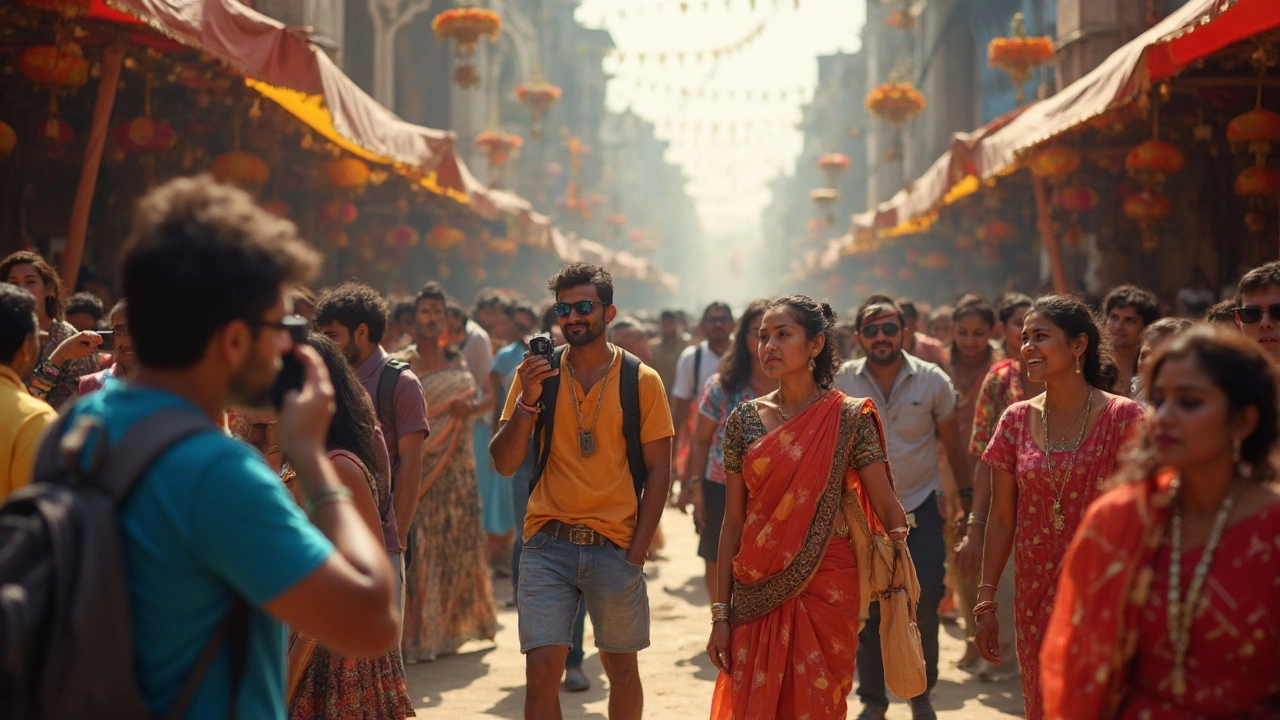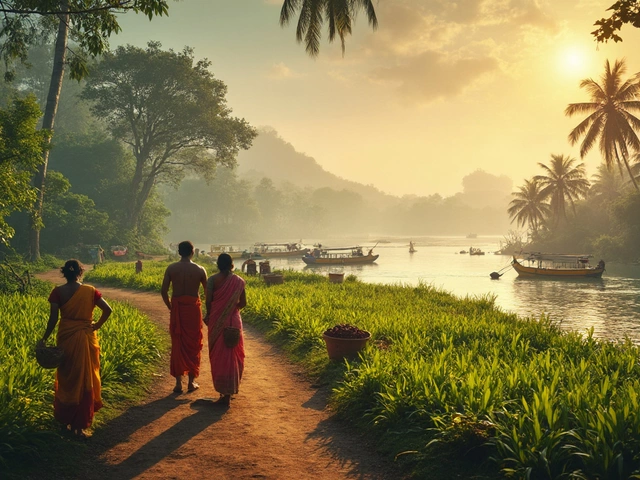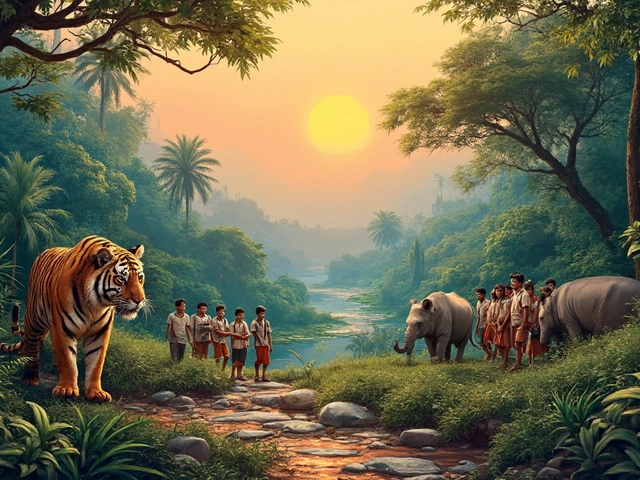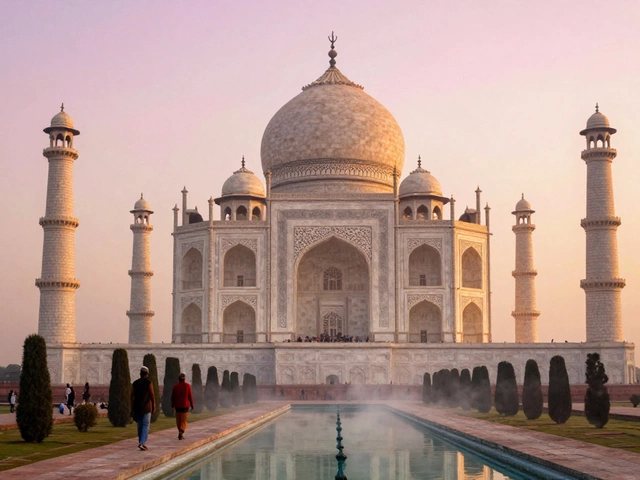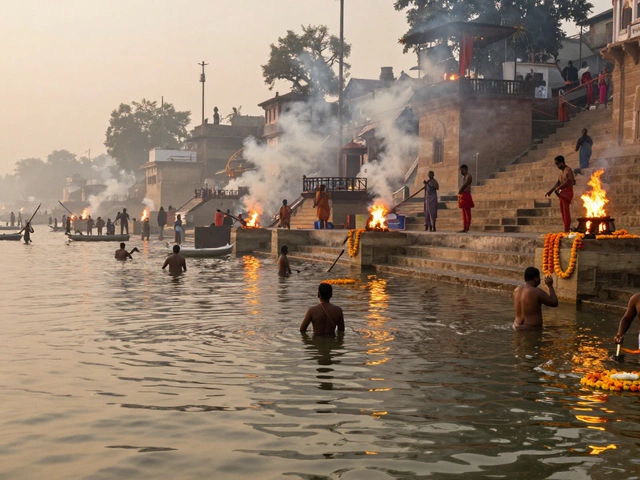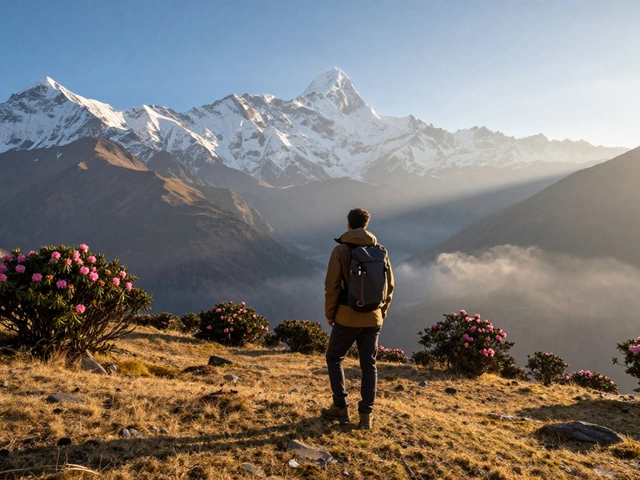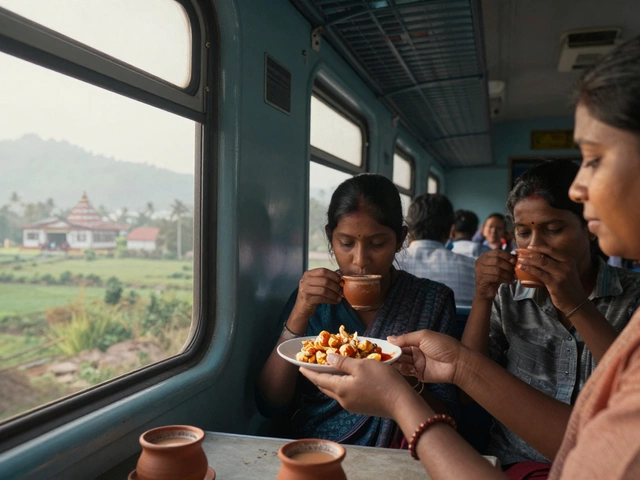People rarely talk about the hidden sides of tourism in India—you've got the majestic forts, serene temples, endless bazaars—but the reason people come is as interesting as what they see. Not every tourist is running around ticking off photos at the Taj Mahal or yoga retreats in Rishikesh. When it comes to cultural tourism, travelers fall into two main types: those who just want to see and those who want to truly feel.
Spotting your type can help you pick what to see, where to go, and even how to spend your time (and money) in India. It’s not about who’s more “authentic” or “deep”—it’s just about what kind of experiences mean the most to you. Some folks are in a hurry to see the big stuff, grab the souvenir, snap the selfie. Others want to eat breakfast in a family’s home, learn local slang, and get lost in small neighborhoods most tourists miss. Figuring out your style means you’ll leave India with stories you actually care about, instead of a pile of photos you barely remember three months later.
- The Sightseer: Chasing the Must-Sees
- The Experiencer: Diving Deeper
- Key Differences in How They Travel
- Top Tips for Each Type in India
The Sightseer: Chasing the Must-Sees
If you see someone hustling from the Red Fort to the Lotus Temple, city guidebook in hand, they're probably a classic sightseer. Sightseers are all about hitting those famous spots and making sure nothing "big" is missed. Think of them as checklist travelers. For cultural tourism in India, this usually means places that show up in every brochure and Instagram tag.
The classic list? It usually looks like this:
- The Taj Mahal in Agra – It draws about 7 to 8 million people every year, making it India’s top visited site.
- The palaces of Jaipur (like the City Palace and Amber Fort)
- Varanasi’s ghats, where pilgrims flock to the Ganges River for rituals
- The ancient caves of Ajanta and Ellora
- Delhi’s blend of Mughal and modern sights, from Humayun’s Tomb to Qutub Minar
Why do sightseers travel this way? For many, it’s about packing in the highlights, taking photos to show friends, and collecting experiences that everyone recognizes. There’s comfort in knowing you’ve seen the “must-sees”—it feels like proof you’ve done India right. You only get so much vacation, after all.
Here’s a quick breakdown of top cultural sightseeing spots and how many people visit them each year:
| Attraction | City | Annual Visitors (approx.) |
|---|---|---|
| Taj Mahal | Agra | 7.5 million |
| Qutub Minar | Delhi | 3.9 million |
| Golden Temple | Amritsar | 6 million |
| Amber Fort | Jaipur | 3.5 million |
Quick tip if you’re a sightseer: try going early in the day or even off-season. The sights are less crowded, and you actually get time to take it all in. And if you’re hoping for that classic Taj Mahal photo with no one blocking the view? Being in line before sunrise is your best bet.
For sightseers, cultural tourism is about catching all the headline moments. Never feel bad if you’re skipping the backstreets—everyone travels differently, and seeing the iconic landmarks is a tradition in itself. Just make sure you leave some space in your plan for a surprise or two. You never know which famous site will end up being your favorite memory.
The Experiencer: Diving Deeper
This is where cultural tourism in India goes from good to unforgettable. "Experiencers" aren’t just passing through—they want to get their hands dirty and really understand what makes a place tick. Instead of packing in lots of sightseeing, they choose fewer spots but spend way more time there, almost like slow-cooking their memories.
Experiencers usually skip the crowded guidebook trails. You’ll find them taking part in a local festival, helping out at a rural crafts workshop, learning Garhwali cooking in a mountain village, or having chai with an artist in Mumbai. It’s about experiences that are honest and personal, not just ticking off attractions.
According to a 2024 Indian Ministry of Tourism report, almost 37% of international visitors joining service-learning or homestay programs say their main goal is to learn a skill or tradition. These travelers don’t just look at culture, they join in. Being part of Holi, living with a host family in Rajasthan, or even working in a Ladakhi organic farm gives them something a selfie can’t capture.
- Take a cooking class in Kerala to get creative with local spices.
- Stay with a family in a small Gujarat village and see daily life up close.
- Join a Block Printing workshop in Jaipur and take home something you made yourself.
- Spend a day with a guide from a tribal community in Chhattisgarh to hear first-hand stories you won’t find online.
Don’t expect five-star comfort, though. These experiences are about raw, real moments, sometimes involving shared bathrooms and bucket baths—totally worth it for stories you can't buy on a package tour.
| Type of Experience | Avg. Duration | Approximate Cost (2024 INR) |
|---|---|---|
| Homestay (per night) | 1-5 nights | ₹1,200–₹3,000 |
| Local Cooking Class | 3-4 hours | ₹1,500–₹2,500 |
| Hands-on Craft Workshop | Half-day | ₹800–₹2,000 |
| Community Festival Visit | Varies seasonally | ₹500–₹3,500 |
If you crave memories that stick, let experience be your guide. You’ll leave India with a bunch of random skills, a few new friends, and a viewpoint most tourists never see. That’s where cultural tourism turns personal—sometimes messy, always worth it.
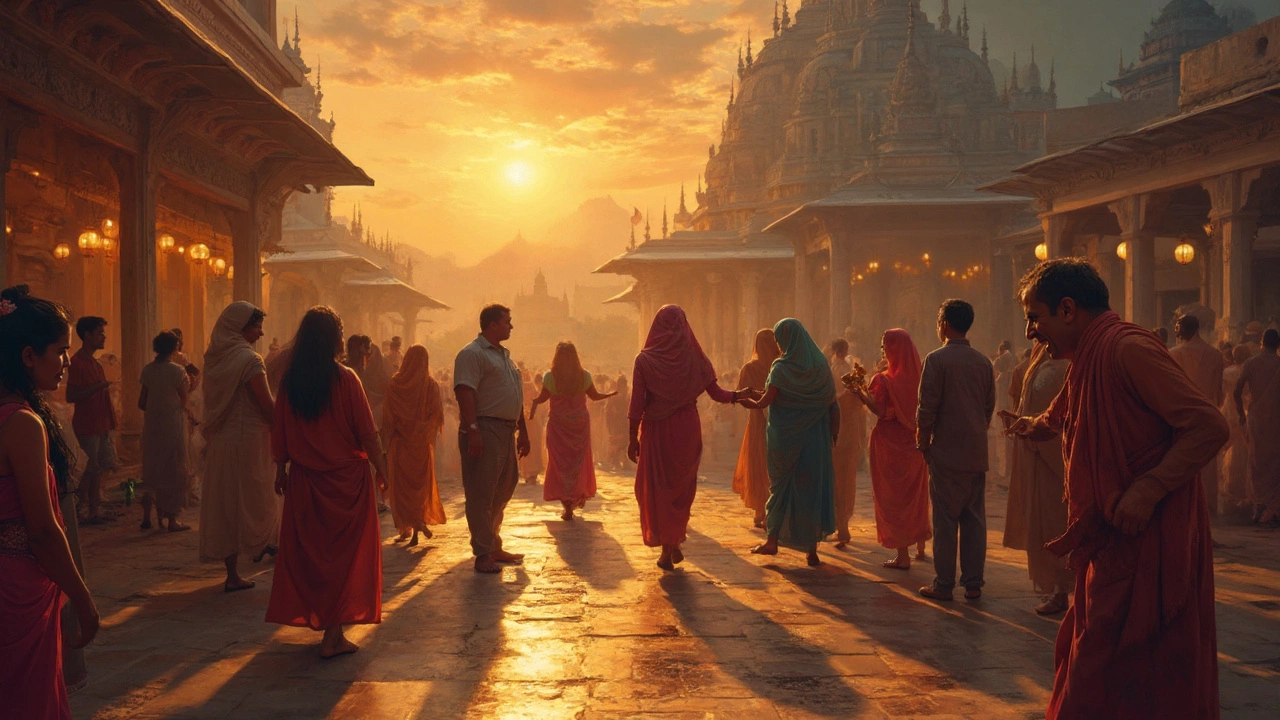
Key Differences in How They Travel
The two types of cultural tourists in India move through the country with totally different approaches. Sightseers are all about covering ground. Their itineraries are packed. Think sunrise at the Taj Mahal, midday at Amber Fort, evening shopping in Jaipur—all in one day if possible. They’re happy with tours that promise the big highlights. Audio guides, bus windows, and group photos are their thing. Most hotels and travel agencies know this, so they bundle the must-sees into short day trips or seven-day loops covering every buzzword spot.
Experiencers don’t keep a strict schedule. They’ll spend hours chatting over chai in a local home or helping out at a craft workshop in Varanasi. These folks travel slower, sometimes staying a week in a single city or village. They choose homestays, walk neighborhoods with locals, and often take public transport just to see where it leads. Their focus isn’t on checking off sites but soaking in the daily rhythms of Indian life.
- Sightseers usually book organized tours and seek out famous landmarks with historical or religious value.
- Experiencers often plan their own route, pick boutique stays, and say yes to hands-on activities—like joining in a Holi celebration or learning traditional block-printing in Rajasthan.
- Sightseers prefer explanations and stories told by guides, while experiencers want to hear personal tales from residents.
- Experiencers are more likely to eat at street stalls, attend local festivals, or try their hand at traditional cooking.
To break it down, here’s a quick side-by-side look:
| Sightseer | Experiencer | |
|---|---|---|
| Trip Length | Short, multi-city | Longer, fewer locations |
| Accommodation | Mainstream hotels | Homestays, guesthouses |
| Transport | Private, group tours | Public transport, walking |
| Activity Choices | Landmark visits | Workshops, festivals, daily life |
| Food | Comfort food, chains | Street food, family kitchens |
The biggest thing? Cultural tourism in India feels different depending on which type of traveler you are. If you’re after lots of photos of iconic places, you’ll stick to the well-worn path. If you prefer stories and one-of-a-kind moments, you’ll wander into alleys—or families’ lives—that guidebooks never mention. Knowing your style makes every part of your trip smoother and more memorable.
Top Tips for Each Type in India
Traveling as a cultural tourist in India can go from smooth to sticky fast, depending on what you want from your trip. Here’s how to make your journey work for your travel style, using practical advice and real examples.
Cultural tourism in India pulls in millions each year, but not everyone wants the same thing. Below, you’ll find clear tips for Sightseers (the snap-and-go crowd) and Experiencers (people who love getting personal with local life).
For Sightseers (The Must-See List Lovers):
- Hit the Classics Early: Taj Mahal, Jaipur’s Amber Fort, Varanasi’s Ganga Aarti—all are magnets for crowds. Go at sunrise for thin crowds and softer light for photos. According to the Archaeological Survey of India, the Taj draws 22,000 people per day on holidays.
- Book in Advance: Entry to popular monuments often sells out, especially during December-January. Book e-tickets on official websites, not third-party resellers. For the Golden Triangle (Delhi-Agra-Jaipur) route, try to reserve trains at least two weeks ahead.
- Travel Light, Move Fast: On a tight schedule? Avoid suitcases. Use a small daypack and flights like IndiGo or Vistara for quick hops between cities. Domestic flights can be cheaper than you think—fares between Delhi and Mumbai have dropped close to ₹2,500 ($30) on some days.
- Don’t Underestimate Distances: India is massive. Delhi to Agra looks close, but the drive can eat up four hours thanks to traffic. Use apps like Rome2Rio to double-check travel times.
- Get a Guide for Hidden Facts: Licensed guides inside major sites will point out details you’ll likely miss, like the echo chambers in Fatehpur Sikri or the secret windows in Mysore Palace.
For Experiencers (The Dive Deeper Crowd):
- Take Part, Don’t Just Watch: Instead of just glancing at a local festival, join one. Try Holi in Vrindavan or Diwali with a local family. Check Airbnb Experiences for cooking classes, block printing in Jaipur, or Bollywood dance lessons in Mumbai.
- Go Small, Stay Longer: Trade big cities for places like Hampi, Orchha, or a village homestay in Kerala. In 2023, Kerala’s Responsible Tourism Mission reported a 40% rise in guests choosing rural stays over hotels.
- Ask Locals for Lunch: Street food tours are booming, especially in places like Delhi’s Chandni Chowk or Kolkata’s Park Street. These areas offer safe tours led by locals and great hygiene. Always check recent reviews and avoid raw foods in the summer.
- Learn a Few Local Phrases: In Tamil Nadu or West Bengal, even a few phrases like "Vanakkam" (“hello” in Tamil) or "Nomoshkar" (Bengali greeting) make you stand out—and doors open faster.
- Go with the Slow Season: Monsoon months (June-September) have fewer tourists and tons of local festivals. Bring a umbrella and hit the South for unique temple celebrations—it’s worth the extra planning.
Here’s a snapshot of what matters most for each type:
| Type of Tourist | Best Regions | Top Priority | Useful Resource |
|---|---|---|---|
| Sightseer | Golden Triangle, Rajasthan, Varanasi | Major monuments, quick access | Official ASI site, GetYourGuide |
| Experiencer | Kerala, Hampi, rural Punjab, Northeast | Community, hands-on learning | Airbnb Experiences, local NGOs |
Smart packing tip: Both groups should pack medication for "Delhi belly," lots of sunscreen, and a digital payment app like Paytm—over 80% of city shops and cabs now use digital payments, way up since even 2022.
